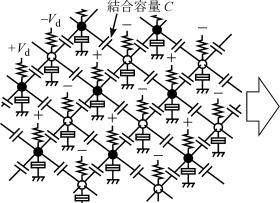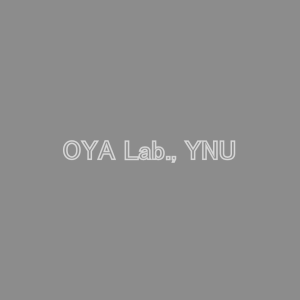College of Engineering Science / Graduate School of Engineering Science, Yokohama Nat'l Univ.
INTRODUCTION (Research in Oya Lab.)
We are amazing nanodevice creators!!
We are now studying for fabrication of novel and functional nanodevices based on unconventional approaches.
Pillar #1: Merge Japanese traditional and
current nano- technologies!!(Experimental
study)

- Japanese washi paper making method (traditional technology)
Washi is made from long natural fibers and the manufacturing process has been in existence for a long time. Paper making techniques were brought from China to Japan in the year 610 AD. Current paper making techniques are merely just improved versions of traditional ones. The method is generally simple.
- Carbon nanotubes (made by current nanotechnology)
Carbon nanotubes (CNTs) that were discovered in 1991 have been focused as the next generation LSIs because the CNTs can not only be wires in LSIs but also data processing objects. In a current research on fabricating CNT devices, various functional devices and fabrication methods for making network formations have been proposed. There has been some very interesting research on the fabrication of CNT sheets has been reported. Such CNT sheets will have applications that include light emitting diodes, high-strength cables, and substrates to observe the behavior of biomolecules.
- CNT-composite paper (tradition + current tech.)
We developed a simple method for making CNT-composite-papers based on a traditional method for making Japanese Washi paper. In our method, we make electrically conductive Washi that contains CNTs. In the CNT-composite-papers, the CNTs are located in apertures between paper fibers and on the fibers. The CNT-composite-papers has many functions that the normal papers must not have because of the added CNTs, i.e., electrical conductivity (metalic or semiconductive), heating by IR, molecule adosorption, and more.
The application of our CNT-composite-papers is not limited!!
We also succeeded in developing "CNT-composite-threads (fabrics)"
and their applications.
Pillar #2:Imitate phenomena (function) in nature!!
(Simulation study)

- Information processing in the nature
(Keyword: Reaction-diffusion computing)
We propose a single-electron nanodevice that imitates the behavior of the reaction-diffusion system, which is a chemical complex system producing dynamic, self-organizing phenomena in the natural world. Constructing an electrical analog of reaction-diffusion systems would enables us to generate artificial nature-dynamics on a LSI chip and develop nature-inspired information-processing systems.
(<- Optimal path planning by single-electron reaction-diffusion device
(simulation))


Example circuit of reaction-diffusion computing & its sample operation
banner
Oya Lab.,
Grad. Sch. of Eng. Sci., YNU
79-5, Tokiwadai, Hodogaya-ku,
Yokohama, 240-8501, Japan
TEL: +81-45-3394119
E-mail:
oya-takahide-vx[at]ynu.ac.jp
